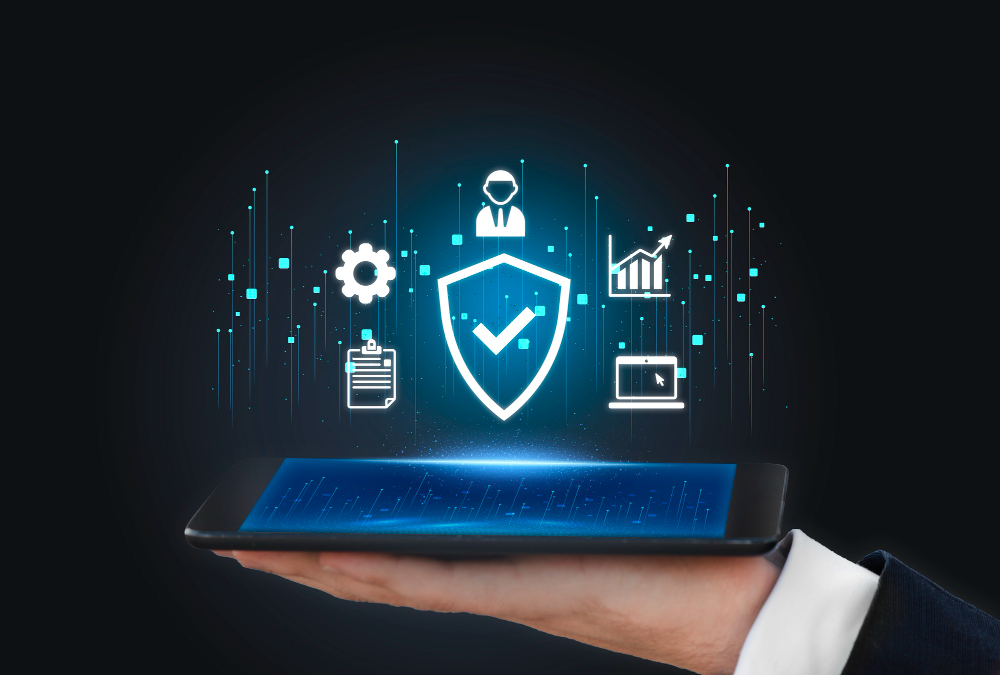As per the Cambridge Dictionary, “Cybersecurity is the things which are done to protect a person, organisation, or country and their computer information against crime or attacks carried out using the internet.” This includes defending computers, servers, mobile devices, electronic systems, networks, and data from malicious attacks. Cybersecurity comprises security on the network, application, information, operational, disaster recovery and business continuity.
The primary object of cybersecurity is to ensure the confidentiality, integrity and availability of information and resources in the digital world. Confidentiality means protecting data from unauthorised access, integrity means safeguarding the accuracy of the data, and availability means ensuring that digital systems and data are constantly accessible when needed.
Cybersecurity also encompasses various security strategies, practices and technologies to achieve its objectives. These include antivirus software, firewalls, encryption, access controls, Intrusion Detection Systems (IDS), Intrusion Prevention Systems (IPS), encryption, security audits, security compliance, security awareness training, incident response, Multi-Factor Authentication (MFA), etc.
The Need for Strong Cyber Security Architecture
In our ever-evolving interconnected world, we never know what might happen next. We cannot predict when hackers or cyber attackers will find a vulnerability in our computer systems and exploit them. That is why a robust cybersecurity framework should be implemented to reduce the risk of cybersecurity breaches. Gone are those days when cyberattacks were less frequent and less complex and also when the approach to cyber security was not as complicated.
This modern era has brought in complex security threats and sophisticated attackers. So, to stay one step ahead, organisations must adopt a consolidated cybersecurity strategy that offers deeper visibility and more robust defences. Another thing that adds a layer to an already complex digital realm is the increase of cloud environments. The network is sprawling, and it makes it hard to maintain a robust cybersecurity posture all around the organisation.
As technology evolves and “bring your own device” (BYOD) policies become the norm, securing a diverse range of devices, some not even owned by the company, becomes imperative. Additionally, the rise of remote work, exemplified by the response to the COVID-19 pandemic, has reinforced the need for robust cyber security solutions and infrastructure security to protect remote and on-site employees from cyber attacks.
So, to tackle the security risks in today’s complex digital world, organisations need to keep things simple and effective. They must realise that consolidating and streamlining their security programs is the most scalable and sustainable way to manage security risks, threats and vulnerabilities. It’s like building a strong, reliable security fortress to protect against all the potential dangers out there. By doing this, they can ensure good security that stands the test of time and adapts to the ever-changing digital landscape.
Different Types of Cyber Security
Cybersecurity can be divided into a few categories. They are:
Network security is focused on safeguarding the integrity and privacy of data transmitted across networks. It involves measures such as firewalls, intrusion detection systems, and encryption to shield against cyber threats.
Different Types of Cybersecurity Threats
Hacking is when someone with technical skills gains unauthorised access to computer systems or networks, often to steal or manipulate information.
Insider threat is a security risk originating from individuals within an organisation, whether intentional or unintentional, that can compromise data and system integrity.
Social engineering is a deceptive and manipulative technique cybercriminals use to trick individuals into revealing sensitive information or taking specific actions. It often involves impersonation, persuasion, or psychological manipulation to achieve malicious goals.
How To Stay Safe from Cyber Threats?
To stay safe and secure online, you should at least follow the major preventive measures against cybercrimes or cybercriminals. Here are some major and straightforward steps you can take to ensure your cybersecurity.
Strong Passwords: Use strong, unique passwords that combine numbers, symbols, and upper and lower-case letters for your online accounts.
Multi-Factor Authentication (MFA): Enable MFA wherever possible, as this reduces cyber risks. This adds an extra layer of security by requiring multiple forms of identification, like a password and a code sent to your phone.
Update Software: Regularly update your operating system, software, and antivirus programs. Updates often include patches for known security vulnerabilities.
Beware of Phishing: Be cautious about clicking links or downloading attachments from unfamiliar or suspicious sources. Phishing emails often trick you into revealing personal information.
Firewall: Enable your device’s firewall to block unwanted access to your computer or network.
Backup Data: You should regularly back up your important data so that in case of a cyberattack or hardware failure, you won’t lose valuable information.
Employee Training: If you’re a business owner, ensure your employees are trained in cybersecurity best practices to prevent data breaches and protect sensitive company information.
Regular Audits: Conduct security audits and assessments to identify and address system vulnerabilities to prevent cyber security risks.
Incident Response Plan: You should develop and implement an incident response plan that outlines the steps to take in case of a cyber security incident. This can help minimise damage and downtime.
Also read: What are managed cyber security services?
What is the Australian Cyber Security Centre (ACSC)?
The Australian Cyber Security Centre (ACSC) is a part of the Australian government dedicated to strengthening cyber security and making Australia the safest place to interact online.ACSC also ensures collaborative efforts between government, corporate, and academic partners, as well as specialists from Australia and worldwide, to study and create solutions to cybersecurity issues.
ACSC also monitors cyber dangers worldwide 24 hours a day, seven days a week, and offers guidance and information on safeguarding oneself and one’s business online. Furthermore, the ACSC collaborates with law enforcement to combat cybercrime and achieve cybersecurity excellence.
Conclusion
In conclusion, in our interconnected digital world, the importance of cybersecurity cannot be overstated. With a multitude of threats and ever-evolving tactics used by cybercriminals, individuals and organisations must stay vigilant and adopt security products, security measures and security operations to protect their online presence and valuable data from security threats and vulnerabilities.
By adopting a strong cybersecurity strategy, organisations can build a strong defence against potential dangers. This involves streamlining security programs, leveraging advanced security technologies, and providing comprehensive training to employees. It is also crucial to stay updated with the latest security practices, regularly update software, and be cautious of phishing attempts and other social engineering techniques.
At NSWIT Support, we take cybersecurity seriously and understand the critical importance of protecting your information and implementing strong security controls. As a leading IT Support company in Australia, we are dedicated to helping businesses of all sizes prioritise cybersecurity. If you’re seeking a reliable IT Support company that offers comprehensive services, including top-notch cybersecurity solutions, look no further. Contact us today to learn how we can protect your business and provide exceptional IT Support at every step.
FAQs
What is Cyber Security?
Cyber Security refers to the practice of protecting computers, servers, mobile devices, electronic systems, networks, and data from digital attacks.
What does managing cyber security involve?
Managing cyber security involves identifying, assessing, and responding to security risks, implementing and maintaining security policies and controls, and continuously monitoring and enhancing the overall security infrastructure.
What are security solutions?
Security solutions are technologies and systems that protect electronic devices, networks, and data from cyber threats. They can include firewalls, antivirus software, intrusion detection systems, encryption tools, and more.
What are cyberattacks?
Cyberattacks are deliberate and coordinated attempts to compromise the confidentiality, integrity, or availability of electronic systems, networks, and data. They can include malware infections, phishing attacks, DDoS attacks, and more.
What is web application security?
Web application security refers to protecting web applications from security vulnerabilities and threats. It involves implementing security measures to prevent unauthorised access, data breaches, and other exploits targeting web applications.
What are security policies?
Security policies are rules, regulations, and guidelines that define how an organisation’s information systems, networks, and data should be protected. They outline the acceptable use of resources, the responsibilities of users, and measures for mitigating security risks.










